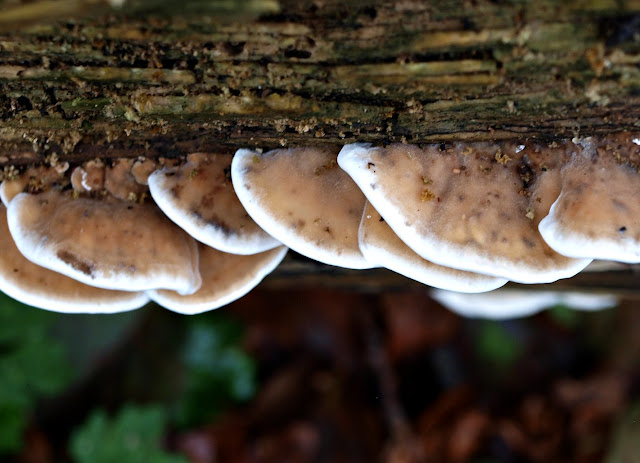Jane and I recently spent a couple of days visiting her Mother, who lives in the village of Golborne, near Warrington. She is elderly and has mobility problems, so she was very pleased when we offered to take her out-and-about a bit. On one day we visited
Walton Hall and Gardens. This is a country estate, formerly the seat of Lord Daresbury, founder of the famous Greenall's Brewery, that was taken into Public Ownership by Warrington Council in 1941.
The Hall itself, whilst imposing, is not hugely grand. You wouldn't call it a "Stately Home". And being built mostly with the local red standstone and red brick, its appearance is rather dark and sombre.
The Hall appears to be in use as a conference centre and is not set up as a tourist attraction, so I can't tell you anything about the interior. For many people though the main appeal of the place is really the thirty acres of land surrounding the house. Some of it is laid out as formal gardens, some of it is devoted to woodland walks, but much of it consists of tree-studded lawns on which you can walk, play games or just relax on one of the many benches provided. Jane and I took turns trundling Mum around the paths in her wheel-chair, with me pausing every now and then to capture something on camera.
There are lots of interesting things to see, some of them plants - like this beautiful Acer in full Autumn "plumage"
And this very festive-looking Yew tree, with its curious hollow red fruits. You'll think me wierd, but I reckon they look like Olives stuffed with Pimento - except reversed!
Some of the things to look at are purely man-made, like this gravestone commemorating a loved pet. Don't know what sort of animal Bristles was, but I would think it was either a horse or a dog.
Some of the objects were partly natural and partly man-made, like this clever carving of a Fox, in the trunk of a dead tree. You can't see it in my photo, but at the top of this tree was also a carving of an Owl. It reminded me of a Totem Pole!
In one part of the garden is a small zoo, housing animals and birds of the types that most children love:- goats, chickens, geese, rabbits, Shetland ponies etc - even a 26-year-old donkey called BoBo (who you can apparently follow on Twitter!) but also some other more unusual things, such as a fair number of Red Squirrels (our native species, but now very rare in the wild, having been ousted by the more vigorous Grey Squirrels). My picture shows one of the Red Squirrels looking down on me from an overhead walkway which connected cages on both sides of the path.
There were also some very appealing Ferrets, including this albino one.
This African Pygmy Goat was quite cute. I expect Hazel would like it anyway...
I know that many of my blogging friends are fanatical about chickens, so I dutifully snapped this one. Don't ask me what type it is. In fact I can hardly tell one end of a chicken from the other without specialist advice. This one was white and fluffy. Was it a Silky???
This photo was supposed to have been of a Herdwick sheep, but I like it best for the cheeky little Robin sitting on the branch at the left of the picture
Finally - some of the Fungi on display were so dangerous that they too had to be kept behind bars...
I'd like to go back to Walton in the Summertime, and look at the formal gardens. I imagine they would present a lot of good photo opportunities...





















































